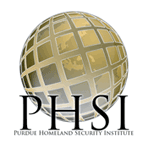Abstract
Natural disasters and man-made failures or defects cause damage to buildings and its contents disrupting people’s lives, businesses and the communities they live in. On a worldwide scale billions of dollars are spent to mitigate, restore and recover from a one-time residential incident, a single site large loss or for an area wide catastrophe.
This 2 part panel presentation will offer a perspective on the best practices from 3 different industry sectors from initial response to full recovery.
Representatives from the Restoration, Demolition and Volunteer Assistance industries will provide valuable insights to best practices and offer solutions on how industry can collaborate with academia, government, the social sector and community based organizations to better serve the victims affected by a disaster.
The ongoing goal of response and recovery should be for the stakeholders to share the lessons learned from previous disasters to help recover and build more resilient communities. Working together to develop emergency response plans and establishing a resource base before a disaster happens can better prepare for the recovery process.
The recovery process is not only about the restoration of people's dwellings and personal belonging, but also about restoring ones "peace on mind" so they can resume their life after the event!
Dealing with an insurance company or government agency can often be a cumbersome and frightening ordeal for first time disaster victims The industry panel will share their experience on how to best handle financial considerations as well as the physical and emotional aspects of the loss recovery process.
Keywords
mitigation and demolition, restoration and remediation, reconstruction and recovery
DOI
10.5703/1288284315505
Previous Versions
Catastrophic Response and Disaster Recovery: An Industry Panel on Best Practices
Natural disasters and man-made failures or defects cause damage to buildings and its contents disrupting people’s lives, businesses and the communities they live in. On a worldwide scale billions of dollars are spent to mitigate, restore and recover from a one-time residential incident, a single site large loss or for an area wide catastrophe.
This 2 part panel presentation will offer a perspective on the best practices from 3 different industry sectors from initial response to full recovery.
Representatives from the Restoration, Demolition and Volunteer Assistance industries will provide valuable insights to best practices and offer solutions on how industry can collaborate with academia, government, the social sector and community based organizations to better serve the victims affected by a disaster.
The ongoing goal of response and recovery should be for the stakeholders to share the lessons learned from previous disasters to help recover and build more resilient communities. Working together to develop emergency response plans and establishing a resource base before a disaster happens can better prepare for the recovery process.
The recovery process is not only about the restoration of people's dwellings and personal belonging, but also about restoring ones "peace on mind" so they can resume their life after the event!
Dealing with an insurance company or government agency can often be a cumbersome and frightening ordeal for first time disaster victims The industry panel will share their experience on how to best handle financial considerations as well as the physical and emotional aspects of the loss recovery process.



